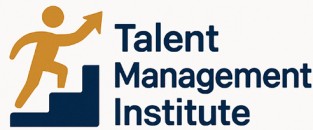
Understanding the Hire-Train-Deploy Model
Exploring the Foundations of the Hire-Train-Deploy Approach
The Hire-Train-Deploy (HTD) model has become an increasingly popular approach for companies seeking to bridge the skills gap and build a workforce adept in handling the complexities of digital transformation. This strategy integrates the hiring, training, and deployment of emerging talent to create a seamless alignment between business needs and the skill sets of recruits. The key to the success of this model lies in its strategic alignment with organizational goals. Many companies hire candidates not merely for current tech stacks but with the foresight of their potential in a dynamic work environment. This approach ensures that recruits are not just job ready but well-suited for long term roles within the team, contributing to a diverse talent pool. A crucial component of this model is the comprehensive training programme designed to equip candidates with the necessary digital skills. This not only addresses the skills gap but also promotes a cost-effective way to deploy tech talent. The tailored training allows companies to train deploy talent who possess specialized capabilities aligning with specific project requirements. Incorporating the hire train deploy technique offers several advantages, particularly in tech-driven sectors. As companies recruit train individuals with emerging talent, they are better positioned to handle shifts in technological advancements and market needs. For those navigating the complexities of filling vacant roles and optimizing workforce potential, strategic spend management can play a pivotal role. Consider how such strategies can enhance your hiring and deployment process by visiting this article. Understanding these principles is the first step towards mastering a proactive and sustainable talent management strategy.Identifying the Right Talent for Your Organization
Pinpointing Talent That Aligns with Organizational Goals
Finding the right talent is crucial for creating a workforce that meets your company’s objectives. In the process of attracting and selecting candidates, companies must take a strategic approach to identify individuals with the right skills and potential for growth. Here’s how organizations can effectively recruit the talent they need:- Define Required Skill Sets: Ensure clarity on the skills needed for specific roles. Consider both technical capabilities and soft skills to address the challenge posed by the skills gap in today’s workforce. Align these skill sets with the company's long-term goals.
- Assess Emerging Talent: Traditional qualifications aren't always indicative of a good fit. Evaluate potential and willingness to learn over past experience. This is especially important when searching for tech talent, as the tech stack rapidly evolves.
- Utilize Diverse Recruitment Channels: Utilize various channels to reach a diverse talent pool. Tap into different platforms and professional networks to identify candidates who can contribute to a culture of innovation and inclusivity.
- Focus on Cultural Fit: A candidate's ability to blend with the company culture often predicts job satisfaction and long-term success. During hiring, prioritize traits that align with your organization's values.
- Seek Talent Solutions Beyond Traditional Recruitment: Leverage modern tools and platforms that offer insights into candidate performance and potential. This can make the talent deployment process more effective and streamline the hiring process.
Designing Effective Training Programs
Crafting Comprehensive Learning Modules
Developing effective training programs is crucial in the hire-train-deploy model, allowing companies to bridge the skills gap and prepare a diverse talent pool for the challenges of the modern workforce. An actionable training program not only addresses the technical skills required but also aligns with your company’s culture and values, ensuring that candidates are job-ready from day one. When designing training modules, it is essential to focus on a diverse range of skill sets, including digital skills and other competencies suited for the tech stack involved in their roles. Here are some effective strategies to consider:- Tailored Content: Customize training content to align with the specific needs of your business and its tech stack. This ensures that new hires can fully engage with the work and meet job requirements effectively.
- Blended Learning Approaches: Integrate various learning methods—like online sessions, in-person workshops, and hands-on projects—to help recruits absorb and apply knowledge effectively.
- Encourage Continuous Learning: Foster an environment of ongoing education by offering access to learning resources and incentives for further professional development, keeping your team adaptable and skilled.
- Assessment and Feedback Loops: Regular assessments help in understanding the progress of the trainees. Constructive feedback can further help in refining the learning processes to make them more effective.
Deploying Talent for Maximum Impact
Optimizing Talent Deployment
Deploying talent effectively is a pivotal step in capitalizing on the investment made in the hiring and training processes. The deployment phase determines how well companies can leverage the skills of their workforce to meet organizational goals. To maximize impact, careful planning and strategic execution are essential. One of the first steps in deploying talent is understanding where the skills acquired during training can be best utilized. Companies should align talent with projects that match their skill set, ensuring that each team member contributes effectively. This approach not only optimizes productivity but also fosters a sense of belonging and motivation within the team. Ensuring that your workforce is equipped with the necessary tech skills to thrive in their roles is crucial. Companies often need to assess their tech stack and see if additional training is necessary for emerging digital skills. This continuous learning culture helps in closing any skills gap and ensures that the team remains job-ready, adapting to any new challenges that technology may bring. Additionally, companies might benefit from considering a diverse talent pool when deploying their resources. A diverse workforce brings varied perspectives and innovative solutions, greatly contributing to a company's adaptability and resilience in changing markets. Organizations keen on digital transformation often find that integrating diverse talent solutions into their deployment strategies enhances their competitive edge. For long-term success, it’s important that talent deployment isn't seen as a one-time event but rather as an ongoing process that is revisited regularly. Continuous assessment and re-alignment with company goals enable a dynamic and adaptable workplace. This flexibility ensures that the company can pivot quickly in response to market changes or new opportunities. In conclusion, deploying talent with precision and strategic intent can significantly enhance overall productivity and company success. While the challenges in talent deployment can be numerous, a well-designed and executed deployment strategy substantially mitigates these issues, ensuring a positive impact on the organization’s performance.Overcoming Challenges in Talent Deployment
Strategies to Overcome Deployment Challenges
Deploying talent effectively within an organization entails more than just placing employees into roles. It requires strategic planning and addressing various challenges that may arise. Here are key strategies to overcome these hurdles and ensure successful talent deployment:
- Skill Gaps and Training Needs: Addressing skill gaps is crucial in ensuring that the workforce is job ready. Continuous training and development programs are necessary to keep up with digital skills and emerging tech trends. Companies must invest in comprehensive training initiatives tailored to meet specific workforce needs, bridging any gaps that might hinder performance.
- Adapting to Technological Advancements: As technology rapidly evolves, organizations must ensure their workforce is adept with the latest tech stack. This involves continuously updating the skill set of employees through ongoing training. It’s essential to align training programs with the technological needs of the organization.
- Managing Change and Flexibility: Change is constant, and organizations should foster a culture that embraces it. Encouraging a diverse talent pool to be flexible and adaptable can help in managing transitions more smoothly, thus enhancing performance.
- Cultural and Team Dynamics: Building a diverse team brings together varied perspectives but also presents challenges in integration. It’s important to cultivate an inclusive culture that values diverse views and encourages effective teamwork.
- Cost Efficiency: Companies must balance between deploying talent and being cost effective. Adopting a hire-train-deploy model enables organizations to optimize hiring expenses while ensuring that employees are adequately prepared for their roles.
- Evaluating Impact: Regularly assessing the impact of deployed talent helps in measuring success and areas for improvement. Continuous feedback mechanisms allow companies to refine their deployment strategies and adapt to changing business needs.
By proactively addressing these challenges, companies can deploy talent strategically, enhancing the long-term success and agility of their workforce.
Measuring Success and Continuous Improvement
Evaluating Talent Success and Ensuring Continuous Development
Measuring the success of your talent management initiatives is crucial in adapting and refining strategies for long-term impact. By evaluating the effectiveness of your hire, train, and deploy (HTD) model, you can ensure that your workforce remains competitive in today’s rapidly evolving tech landscape.
Here's how companies can assess success and pursue continuous improvement:
- Identify Key Performance Indicators (KPIs): Start by establishing KPIs that align with your organizational goals. These could include reduced time-to-hire, improved employee retention rates, and enhanced job readiness of candidates.
- Conduct Regular Skill Assessments: Regularly evaluate the skill set of your employees, especially tech talent, to identify any skills gap. This will help in planning further training programmes tailored to emerging talent needs.
- Track Deployment Outcomes: Monitor the impact of your deployment strategies on business outcomes. If deploying diverse talent into specific roles yields better performance, it might suggest an opportunity for wider application.
- Feedback Loops: Establish avenues for feedback from both the employees and management. Learning from hands-on work experiences allows companies to fine-tune training and deployment strategies to be more cost-effective and impactful.
- Invest in Digital Solutions: Leverage digital transformation tools to oversee workforce management. Advanced analytics and tech stacks can provide deeper insights, enhancing the accuracy of assessments.
Ultimately, by embedding a culture of continuous learning and relying on objective data, companies can vastly enhance their talent solutions. Remember, the continuous improvement facet not only ensures the effectiveness of the HTD model but also solidifies the talent pool’s contribution to the organizational goals.












